
|
|
Abalone

Haliotis sp.
Young abalone with a shell size of less than 3 cm take shelter within the spines of sea urchins for protection. |
|
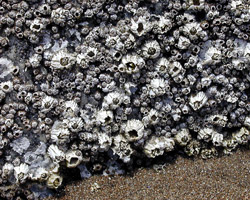
|
|
Acorn Barnacle

Balanus spp.
Barnacles are hermaphroditic (they have both female and male sex organs). |
|

|
|
Bat Star

Asterina miniata
When two bat stars bump into each other they begin a slow-motion “arm wrestling” match. Each sea star tries to get its arm on top of the other’s arm. |
|
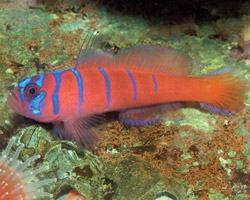
|
|
Bluebanded Goby

Lythrypnus dalli
These peaceful fish are often territorial with members of their own species. |
|
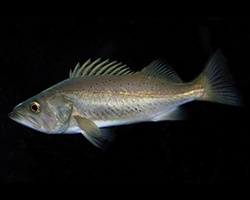
|
|
Bocaccio

Sebastes paucispinis
The bocaccio can live up to 45 years. |
|

|
|
California Mussel

Mytilus californianus
While feeding, a mussel filters 2 to 3 quarts of water per hour. |
|
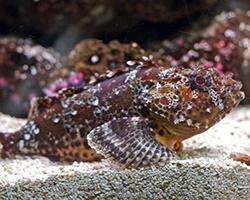
|
|
California Scorpionfish

Scorpaena guttata
The California scorpionfish has venom in its spines. |
|

|
|
California Spiny Lobster

Panulirus interruptus
California Lobsters do not have front claws. |
|

|
|
Giant Kelpfish

Heterostichus rostratus
The giant kelpfish can quickly change color during courtship or territorial displays. |
|
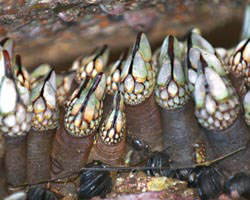
|
|
Gooseneck Barnacles

Pollicipes polymerus
Gooseneck barnacles can live 20 years, or more. |
|

|
|
Green Sea Anemone

Anthopleura xanthogrammica
Some fishes develop resistance to the green anemone's sting by covering themselves with mucus. |
|

|
|
Hermit Crab

Pagurus sp.
Hermit crabs protect their rear ends by hiding it in a snail shell. |
|

|
|
Horn Shark

Heterodontus francisci
The female horn shark lays a distinctive spiral-shaped egg case. |
|

|
|
Masking Crab

Loxorhynchus crispatus
The masking crab decorates itself with bits of algae, sponges and bryozoans. |
|
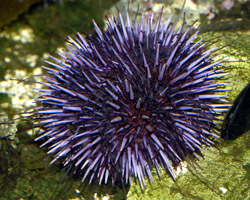
|
|
Purple Sea Urchin

Strongylocentrotus purpuratus
Sea urchins have tube feet, which they use for attachment, locomotion and feeding. |
|

|
|
Sargo

Anisotremus davidsoni
The sargo is the largest of the Pacific grunts. |
|
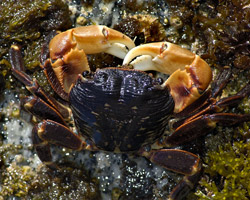
|
|
Striped Shore Crab

Pachygrapsus crassipes
The striped shore crab spends at least half its time on land, but submerges at times to wet its gills. |
|

|
|
Swell Shark

Cephaloscyllium ventriosum
When stressed, the swell shark can “swell” by inflating its stomach by swallowing water. |
|

|
|
Western Gull

Larus occidentalis
The Western gull typically lives about 15 years, but can live to at least 25 years. |
|

